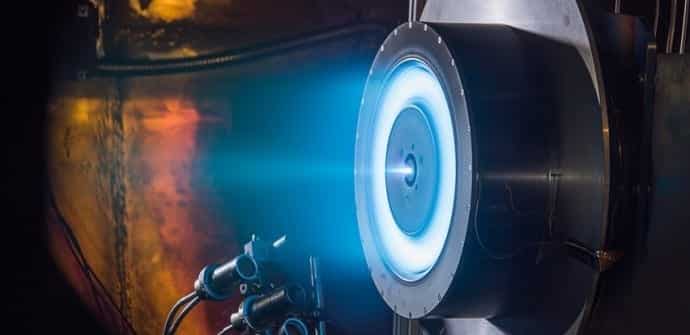NASA gives $67 million contract to develop Solar Electric Propulsion for deep space exploration
NASA has just awarded a US$67 million contract to Aerojet Rocketdyne develop an advanced Solar Electric Propulsion (SEP) system that could eventually take us much deeper into space in the future.
The Advanced Electric Propulsion System (AEPS) contract will design propulsion systems for the robotic portion of NASA’s Asteroid Redirect Mission (ARM) as well as missions to Mars.
AEPS contract is a 36-month cost-plus-fixed-fee contract with a performance incentive and total value of $67 million. Work performed under the contract could potentially increase spaceflight transportation fuel efficiency by 10 times over current chemical propulsion technology, and more than double thrust capability compared to current electric propulsion systems.
“Through this contract, NASA will be developing advanced electric propulsion elements for initial spaceflight applications, which will pave the way for an advanced solar electric propulsion demonstration mission by the end of the decade,” said Steve Jurczyk, associate administrator of NASA’s Space Technology Mission Directorate (STMD) in Washington. “Development of this technology will advance our future in-space transportation capability for a variety of NASA deep space human and robotic exploration missions, as well as private commercial space missions.”
In addition to this particular electric propulsion contract, Aerojet Rocketdyne is responsible for the chemical propulsion — the RS-25 engines — for NASA’s Space Launch System, the rocket designed to be used on missions related to NASA’s Journey to Mars initiative.
In a press release, NASA stated that the propulsion system slated to be used in the upcoming Asteroid Redirect missions, which aim to explore the ways we could deflect an asteroid headed to Earth, as well as a manned trip to Mars, scheduled for around 2030.
SEP in comparison to chemical propulsion has lower thrust but is more fuel-efficient and can provide thrust for longer periods of time. SEP for these reasons works well in the vacuum of space, mainly on spacecraft with long mission lifetimes.
SEP engines offer thrust by changing solar energy into electricity and using that electricity to accelerate ionized propellant at extremely high speeds. The iconic blue glow from a SEP thruster is created from photons released by the ions as they lose energy upon leaving the engine.
For more than five decades, NASA has been refining development of spaceflight electric propulsion technology, the first successful ion electric propulsion thruster being developed at Glenn in the 1950s. The first operational test of an electric propulsion system in space was Glenn’s Space Electric Rocket Test 1, which flew on July 20, 1964.
NASA has since then increasingly depended on solar electric propulsion for long-duration, deep-space robotic science and exploration missions to multiple destinations, the most recent being NASA’s Dawn mission. The Dawn mission, managed by JPL, surveyed the giant asteroid Vesta and the protoplanet, Ceres, between 2011 and 2015.
The next step in NASA’s SEP project is the advanced electric propulsion system, which is developing critical technologies to spread out the range and capabilities of ambitious new science and exploration missions. ARM, NASA’s mission to capture an asteroid boulder and place it in orbit around the moon in the mid-2020s, will test the largest and most advanced SEP system ever utilized for space missions.

I sure wish I could be around for when we start colonizing our Solar System